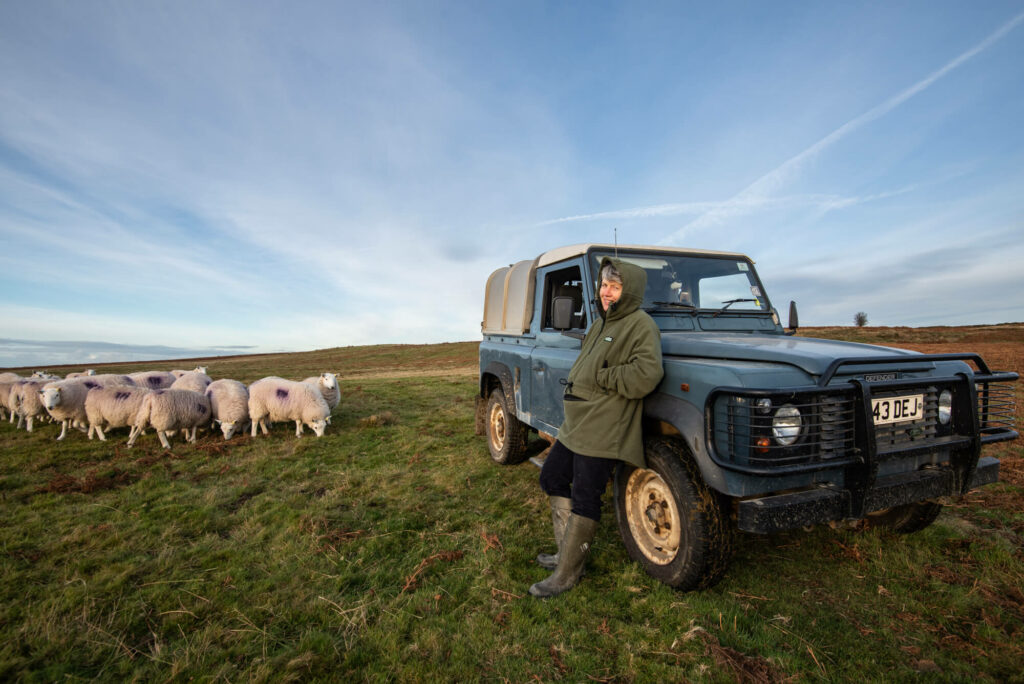The process is often explained in terms of reading a map. Essentially, there are five stages:
- Establish your starting point
- Confirm where you want to go
- Consider the best ways to get there
- Choose one of the routes
- Check your progress periodically to make sure you are on track
Having used the BPS calculator to estimate your starting point, this section covers points two to five.

Where do you want to go?
Where do you want to be in five or ten years time? That is, what are your long term goals?
For mid aged farmers with a couple of college aged children keen to return home, growing the business is often the goal. Whereas for older farmers with no children interested in farming, retirement may be the obvious goal. However, they may not necessarily wish to finish farming. Potentially this creates an opportunity for a new entrant or the neighbour with the two children returning home, via an arrangement like a contract farming agreement or equity partnership.
It follows that goals often require input, discussion and agreement between several family members covering two, if not three, generations. The succession planning section provides useful guidance on how best to deal with what is often a difficult process.

The best way to get there?
Typically, there are a choice of routes to get to a destination. Deciding on the best one involves evaluating a range of information before deciding.
Planning how to set up a farm to generate enough profit to achieve long term goals given the phasing out of BPS, also involves evaluating a range of alternatives. While there are many options to choose from, they can be grouped as follows.
- Continue with the current system (ie, the status quo).
- Improve the performance of the current system (eg, lift performance of the cattle).
- Fundamentally change the current system (eg, reduce the flock and increase the herd; reduce stocking rate and go organic; open a farm shop).
- Change to low input or regenerative farming.
- Expand (eg, take on a FBT nearby).
- Downsize (eg, stop taking summer grazing and reduce stock numbers).
- Cease farming and retire or work off-farm.
The current system is assessed to provide a benchmark to compare all the alternatives against; even though the BPS calculator will typically show the farm is unsustainable without BPS.
The following budgeting tool provides a framework for assessing the pros and cons of potential systems. The idea is to “make your mistakes on paper”. Budgeting reduces the chances of making a bad decision and taking the business down a wrong path.
Download the example spreadsheet to see worked examples of different budgeting options. Then download the blank spreadsheet to try out options for your own farm.
The budgeting process is not simply about assessing the likely impact on profitability. It challenges you to judge potential systems against several criteria. An example will illustrate the budgeting process and the hurdles that must be passed.
Criteria that can help you choose a direction:
| Profitability | When up and running will profitability more than meet cash needs? |
| Feasibility (cash flow and capital requirement) | Is cash flow good enough to cover bills in the months, even years, before the changes are fully established?
If not, will a lender support the business through this period? |
| Practicality | Can the levels of performance built into the budgets be delivered?
Are the farms resources, including the farmer, up to it? Or are new skills required? |
| Riskiness | What happens if performance levels, prices and costs are much worse, or better, than expected? |
| Flexibility | How much wiggle room is built into the system? Does it have potential bottlenecks where things must go right? |
| Environmental impact | How is biodiversity and habitats affected? Implications for water and air quality? Does it improve the carbon footprint? Any impact on the landscape? |
| Commitment needed | Does this option have all partners’ complete commitment? |

Choosing a route
Having investigated a range of alternate options for running the farm in the future, one must be chosen. Sometimes a simple decision. But more often a difficult decision especially where major changes are proposed that involve two or more generations of family members. Sometimes asking a friend, the accountant or family solicitor to facilitate the discussion helps the decision-making process.
Summarising all the options on a single page and scoring them can help structure the process. The criteria should be agreed at the outset.
| Score 1 to 5
where 1 is poor and 5 excellent |
Options | ||||
| 1 | 2 | 3 | 4 | 5 | |
| Profitability | |||||
| Borrowing needs | |||||
| Cash flow | |||||
| Practicality | |||||
| Environmental impact | |||||
| Riskiness | |||||
| Planning requirements | |||||
| Personal | |||||
| Overall score | |||||
Note that scoring some of the criteria will differ between family members owing to individual judgement. That is, this process is as much about “feel” as hard figures. For instance, some family members are comfortable with borrowing a large sum of money whilst another member is not.
Furthermore, research shows that many farmers are not profit maximisers, so given profitability is sufficient to cover cash needs, the preferred option is often down to other criteria (eg, want to reduce workload).

Staying on track
Having chosen a system for addressing the loss of BPS, attention turns to implementing it. Many excellent strategic plans fail owing to poor implementation. So how to get it right?
A plan based on clearly defined objectives is essential. While long term goals tend to be qualitative (eg, to go organic), objectives are numbers based (eg, plant 150m hedgerows next winter) and SMART: Specific, Measurable, Attainable, Realistic, Timely.
SMART objectives provide the milestones for keeping a business on track and are integral to action plans and annual budgets.
To reiterate, having a good strategic plan is just the start. Long term success depends on setting objectives (targets) and checking that these are achieved. Events, may knock the business off course, but they may also present new opportunities. Successful businesses spot difficulties and opportunities early and react appropriately: this may involve short term adjustments (eg, sell more lambs store) or require repeating the full strategic process (eg, the farm next door has come up for sale). Management is, in the jargon, a continuous process.

Farmer Health and Welfare
Change is often difficult and can affect all parts of your life. Find out more about the help and support you can get when you need it most.
Find out more
Tools
The farm business calculator tools on this page are designed to help you identify ways to reduce inputs, improve income and balance your books.
Find out more


